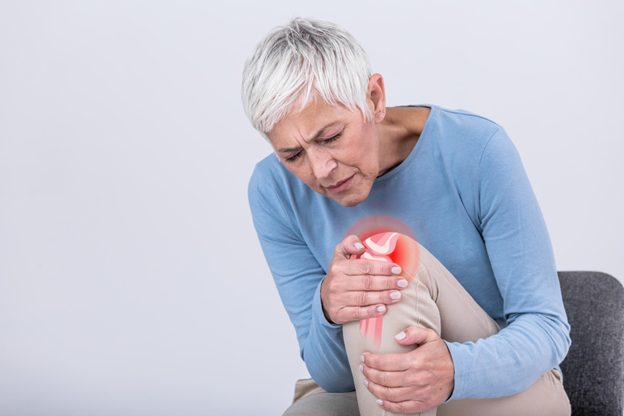Osteoarthritis (OA) is a chronic degenerative joint disease that affects millions of people worldwide, especially as they age. It primarily affects the cartilage in the joints, causing pain, swelling, and stiffness, and can lead to disability if not managed properly. This blog will discuss the causes, symptoms, diagnosis, treatment options, and preventive measures for osteoarthritis.
Causes of Osteoarthritis
Osteoarthritis occurs when the cartilage, the protective tissue that cushions the ends of bones in the joints, deteriorates over time. The exact cause is not fully understood, but several factors contribute to the development of OA:
- Aging: As we age, the cartilage naturally breaks down and becomes less able to repair itself.
- Genetics: A family history of osteoarthritis increases the risk.
- Injuries: Previous joint injuries, such as fractures or ligament damage, can increase the risk of OA.
- Obesity: Excess body weight places more stress on weight-bearing joints like the knees and hips, accelerating cartilage breakdown.
- Gender: Women are more likely to develop OA, particularly after menopause.
Symptoms of Osteoarthritis
The symptoms of osteoarthritis can vary depending on the severity and the joints affected. Common symptoms include:
- Pain: A dull or aching pain in the affected joint, which worsens with activity and improves with rest.
- Stiffness: Limited range of motion, especially after periods of rest or in the morning.
- Swelling: The affected joint may appear swollen, and there may be warmth around the joint.
- Cracking or popping sounds: A sensation of the joint “catching” or making cracking noises when moved.
- Loss of flexibility: Difficulty in fully extending or bending the joint.
Diagnosis of Osteoarthritis
To diagnose osteoarthritis, doctors typically perform a physical exam and review the patient’s medical history. Imaging tests such as X-rays or MRIs are used to observe the extent of joint damage and cartilage loss. Blood tests may be conducted to rule out other conditions that can mimic OA, such as rheumatoid arthritis.
Treatment Options for Osteoarthritis
While there is no cure for osteoarthritis, several treatment strategies can help manage the symptoms and improve quality of life:
- Medications: Nonsteroidal anti-inflammatory drugs (NSAIDs) such as ibuprofen can reduce pain and inflammation. In some cases, corticosteroid injections into the joint may provide temporary relief.
- Physical Therapy: Strengthening the muscles around the affected joint can help alleviate stress on the joint and improve mobility.
- Lifestyle Modifications: Maintaining a healthy weight, avoiding repetitive joint movements, and using assistive devices can help reduce symptoms.
- Surgical Options: In severe cases, joint replacement surgery may be considered. Total knee or hip replacement is common for people with advanced OA.
Preventing Osteoarthritis
While osteoarthritis cannot always be prevented, certain lifestyle changes can reduce the risk:
- Exercise: Regular low-impact exercises such as swimming, cycling, or walking can strengthen muscles and maintain joint flexibility.
- Weight Management: Maintaining a healthy weight reduces stress on joints, particularly the knees, hips, and lower back.
- Joint Protection: Using proper posture and ergonomically designed furniture can reduce the risk of OA.
In conclusion, osteoarthritis is a common condition that can significantly impact a person’s quality of life, but with proper management, individuals can lead active, fulfilling lives. Early diagnosis and intervention are key to reducing symptoms and preventing further joint damage.
Consult us today at SK General & Geriatric for expert guidance!


